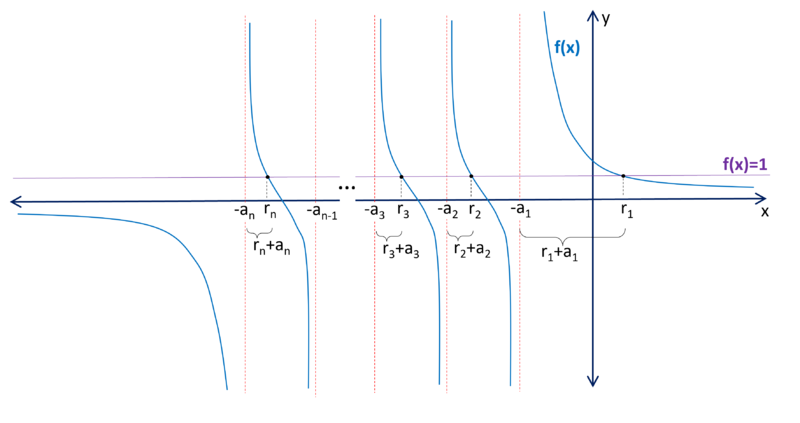Difference between revisions of "1992 OIM Problems/Problem 2"
| Line 10: | Line 10: | ||
== Solution == | == Solution == | ||
| − | Since <math>a_1 < a_2 < a_3 < \cdots < a_n</math>, we can plot <math>f(x)</math> to visualize what we're looking for: | + | Since <math>0<a_1 < a_2 < a_3 < \cdots < a_n</math>, we can plot <math>f(x)</math> to visualize what we're looking for: |
[[File:1992_OIM_P2b.png|center|800px]] | [[File:1992_OIM_P2b.png|center|800px]] | ||
Revision as of 11:58, 17 December 2023
Problem
Given the collection of ![]() positive real numbers
positive real numbers ![]() and the function:
and the function:
![]()
Determine the sum of the lengths of the intervals, disjoint two by two, formed by all ![]() .
.
~translated into English by Tomas Diaz. ~orders@tomasdiaz.com
Solution
Since ![]() , we can plot
, we can plot ![]() to visualize what we're looking for:
to visualize what we're looking for:
Notice that the intervals will be: ![]()
Thus the sum of the intervals will be: ![]()
Now we set ![]() :
:

And solve for zero:



Where ![]() and
and ![]() are coefficients of the respective polynomials for each
are coefficients of the respective polynomials for each ![]()
![]()
From properties of polynomials, we know that the sum of the roots of a polynomial of degree n is ![]() where
where ![]() is the coefficient of
is the coefficient of ![]() and
and ![]() is the coefficient of
is the coefficient of ![]()
Therefore, ![]()
and, ![]()
Thus the sum of the intervals is ![]()
- Note. I actually competed at this event in Venezuela when I was in High School representing Puerto Rico. I got a ZERO on this one because I didn't even know what was I supposed to do, nor did I know what the sum of the lengths of the intervals, disjoint two by two meant. Several decades ago I was able to finally solve it. But even now, I'm still unsure about the "disjunct two by two" wording...
Alternate solutions are always welcome. If you have a different, elegant solution to this problem, please add it to this page.










